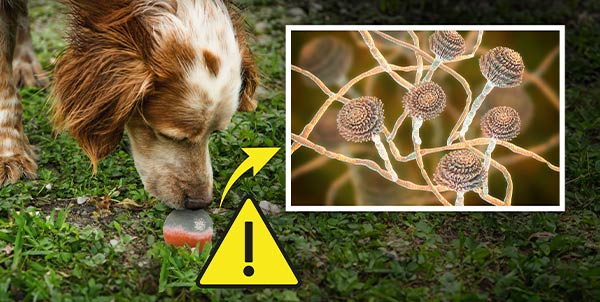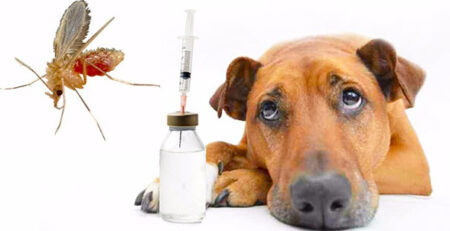Table of Contents
Pulmonary aspergillosis in the dog
Pulmonary aspergillosis is a fungal infection detected in dogs that in almost all cases is caused by a mycete that is a fungus: Aspergillus fumigatus.
Aspergillus Fumigatus is a ubiquitous organism that lives and forms colonies in soil, vegetation and decaying organic matter; its spores are present in the air we all breathe.
How the dog catches aspergillus: the routes of infection
The main route of entry of Aspergillus is respiratory with subsequent dissemination by the hematogenous route i.e., through the blood (angio-invasive).
So, inhalation is the mechanism by which the parasite enters the body of the dog, which can become infected by digging up soil with its nose or by sniffing decaying vegetation, compost and hay.
However, some cases reported in the literature, suggest the possibility of other entry routes such as to
example, the skin, the nipple, the gastrointestinal tract, and the urinary tract.
The dangerousness of aphlotoxin
The mycotoxins produced by Aspergillus are Aflatoxins, which are known to be particularly harmful and toxic.
Aflatoxin, in addition to acute toxicity, can also cause a drastic reduction in immune defenses in the long run.
The World Health Organization has placed Aspergillus fumigatus in the highest hazard category on its list of fungal species hazardous to human and animal health.
What causes Aspergillus fumigatus in dogs: symptoms
In dogs, Aspergillus is mostly responsible for nasal or pulmonary infections.
The dog starts sneezing frequently, has yellow-green nasal discharge, and is impatient to touch or manipulation of the nose and muzzle because of the pain caused by the inflammation.
As the infection progresses, the nostrils come to ulcerate, the nasal discharge becomes purulent and contains traces of blood.
Cutaneous aspergillosis: from localized to systemic
If it spreads from the nose to therespiratory system and then to the rest of the body,cutaneous or nasal aspergillosis becomes pulmonary and then systemic.
In such cases, if not diagnosed in time, it can cause neurological damage and even prove fatal.
Aphlotoxins, in fact, are able to overcome even the anatomical structure placed to protect the brain, the blood-brain barrier.
The blood-brain barrier has the specific function of selectively regulating the passage of potentially dangerous substances and/or microorganisms from the bloodstream to the brain and vice versa.
Symptoms of systemic aspergillosis
In the case of systemic aspergillosis, the symptomatology is highly variable: anorexia and weight loss, fever, and eye disease indicate that the infection has already spread and may worsen further.
The dog’s condition should be considered critical when osteo-articular and neurological deficits such as lameness, vertebral collapse, and sudden paresis occur.
How to diagnose aspergillosis in dogs
For a precise diagnosis, after ruling out other concomitant diseases with similar symptomatology, the veterinarian may also prescribe an endoscopic examination of the nose, with tissue sampling for cytology or biopsy.
Cytological examination and biopsy allow the pathogen to be isolated, confirm the diagnosis, and arrange for administration of the necessary drug therapy.
How to treat aspergillosis in dogs
Unfortunately, there is no specific form of prevention, and fungal infections are considered only when the clinical picture is advanced.
When invasive aspergillosis is highly disseminated in the dog’s body, treatment may be ineffective and the diagnosis is nefarious.
It is advisable, therefore, that you consult your trusted veterinarian at the onset of symptoms.
To refer your dog or cat for a checkup, contact the veterinary doctors on our staff who are always available to you.
We would also like to remind you that Clinica La Veterinaria is always open h24 every day including holidays and with First Aid service from 8 pm to 8 am.











